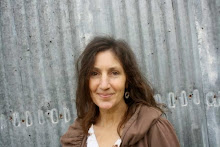I have a lot of cabbage and carrots that need to be put to good use. Here I've washed and started to clean up the cabbage. The bowls contain fennel seed, juniper berry, and salt. I decided later not to use the fennel seed and juniper berry.
The long white root is Daikon radish.
That's a good sharp knife and the pink thing we found at the Thrift Store. It has a very sharp blade. It's called a mandolin.
Salt, fennel seed, juniper berry.
Decided not to use the fennel and juniper in this one.
Going more toward curtido.
Tule is chewing on the cabbage core.
Cabbage and Daikon radish
Carrots now added and also salt.
I'm using the rose salt.
Now you work it. My left hand is out of the photo because I have a cut on my finger and don't want to get salt in it. I found I could do this just fine with my right hand. Squeeze and crush and toss vigorously for a good 5 or 10 minutes. You start to get liquid, the brine.
I added these chile peppers. They are hot
And cauliflower.
I worked the whole thing some more than found a wide mouth gallon jar and handful by handful pressed the wet, salty vegetables into the jar. Then pressed down some more with my fist.
I placed a clean rock on top and pushed it down.
You can see how the liquid rises.
I'll push it down again from time to time.
This will sit on my kitchen counter or in a cool place out of the sun with a cloth over the top.
I'll press it down as needed to keep the juices on top.
We'll taste it as it goes along but best to let it ferment for a couple weeks at least to develop the probiotics.
Please ask permission if you'd like to use these photos or blog. Thanks.


























